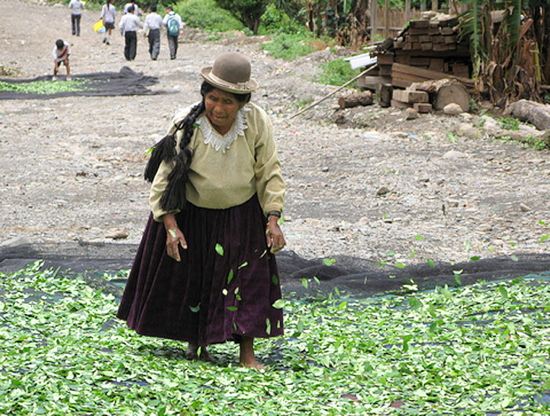
(above) Bolivian Coca Production Remains Stable
Coca Cultivation in Bolivia Remains Stable, Contributes $310 Million to Economy
September 19, 2011 - Hispanically Speaking News
The cultivation of coca bushes in Bolivia has remained stable over the past year with 31,000 hectares planted with the shrub, the raw material for the manufacture of cocaine, according to a new survey by the United Nations Office on Drugs and Crime (UNODC).
"This is encouraging news," said Cesar Guedes, the UNODC Representative in Bolivia, after the report's release yesterday. "Cultivation levels have fallen well below those of the 1990s and that trend looks set to continue."
The annual survey, jointly produced by UNODC and the Bolivian Government, indicated that the Andean nation accounted for 20 per cent of coca cultivation in Latin America last year.
The survey showed slight regional fluctuations within Bolivia, notably a decrease of 2 per cent in Yungas de la Paz, which was offset by an increase of 4 per cent in Chapare. Yungas alone was responsible for 66 per cent of cultivation nationwide.
A total of 2,228 hectares of coca bush was reported to have been cultivated in the national parks of Isiboro Sécure and Carrasco, both located in Chapare, which represented 22 per cent of total coca cultivation in that area. Coca bush cultivation increased by 9 per cent in Isiboro Sécure and by 6 per cent in Carrasco.
Coca leaf prices rose by 22 per cent in authorized markets and by 37 per cent in illegal markets. The value of coca leaf production in Bolivia was $310 million, or 1.7 per cent of the country's gross national product (GNP).